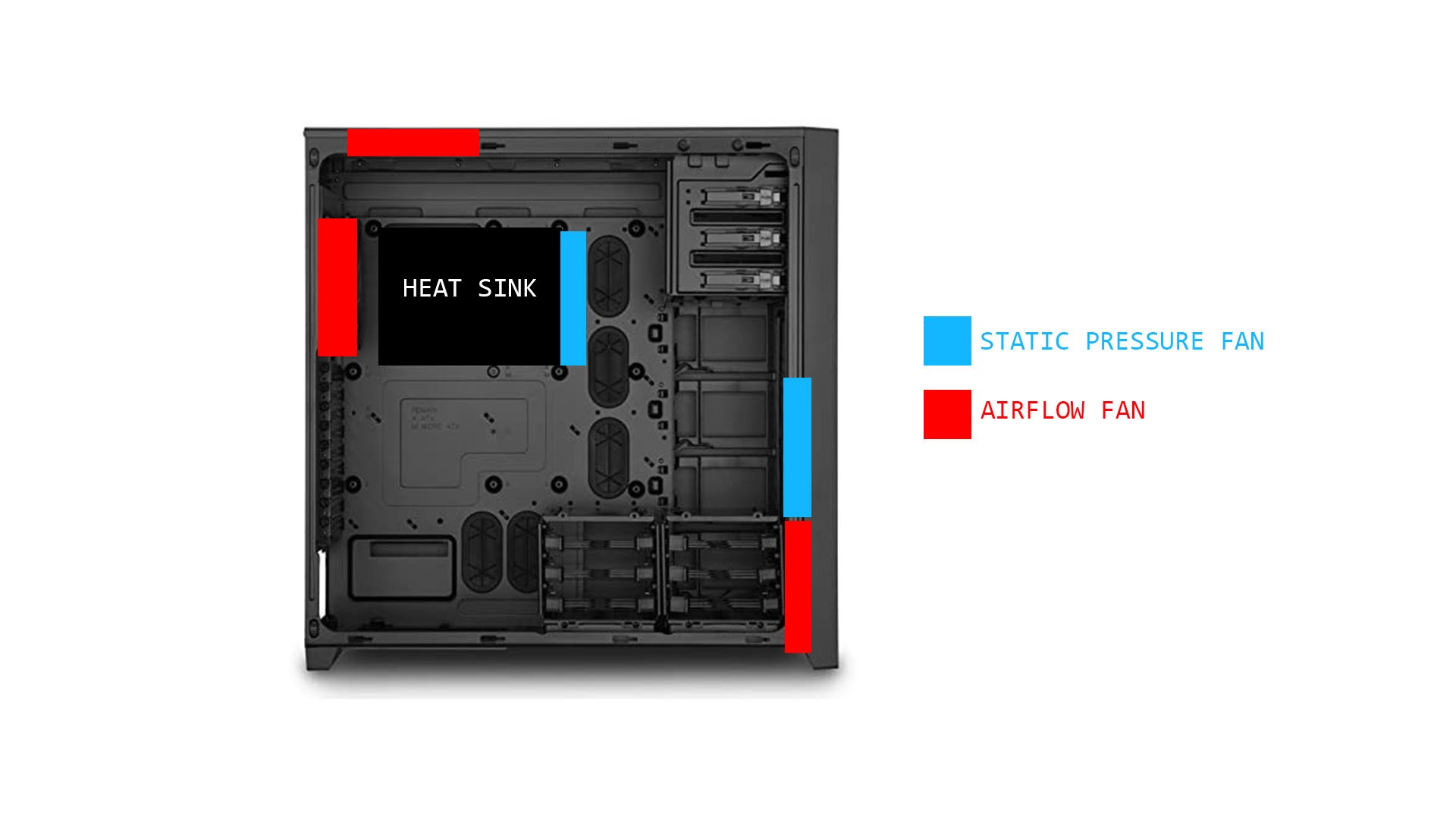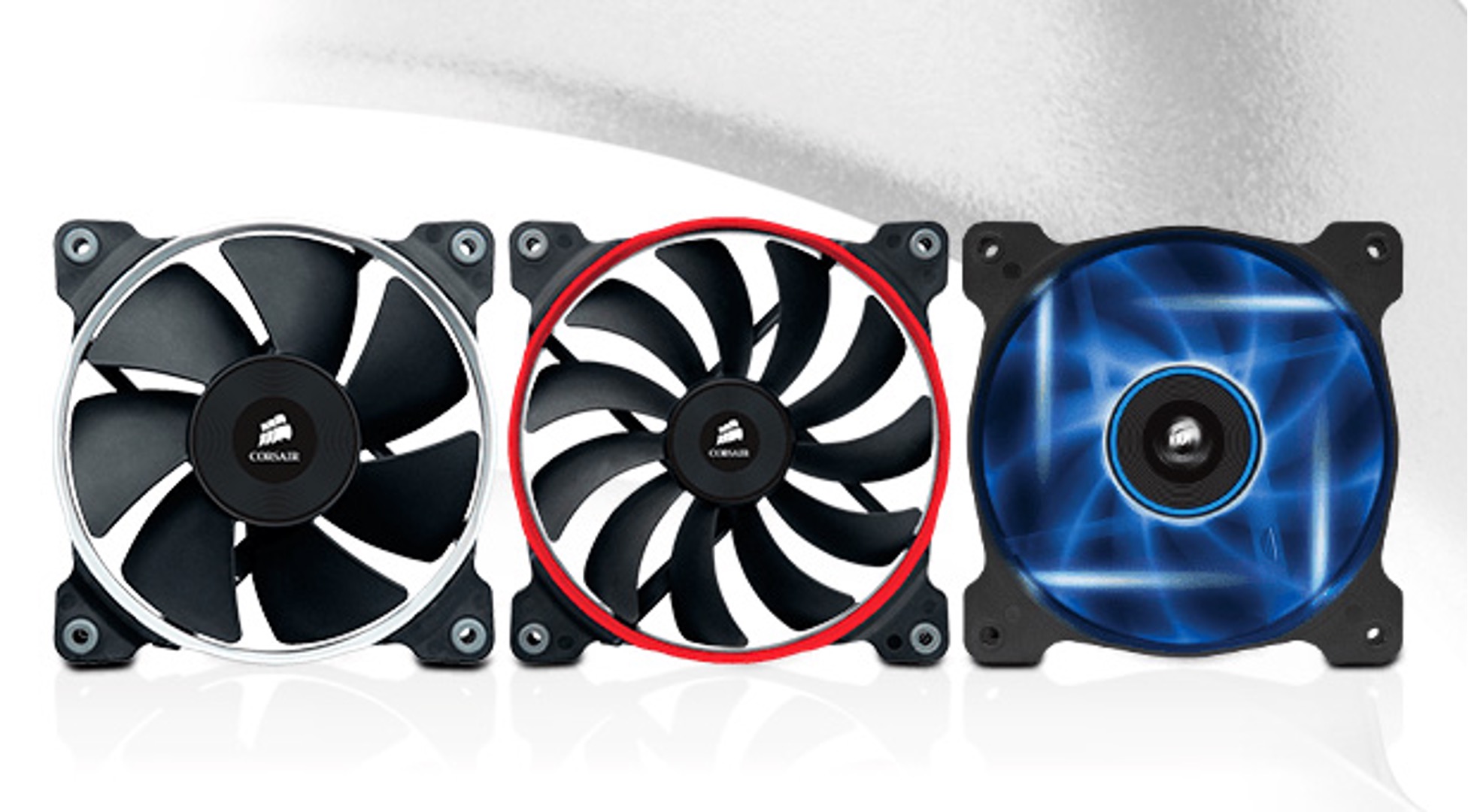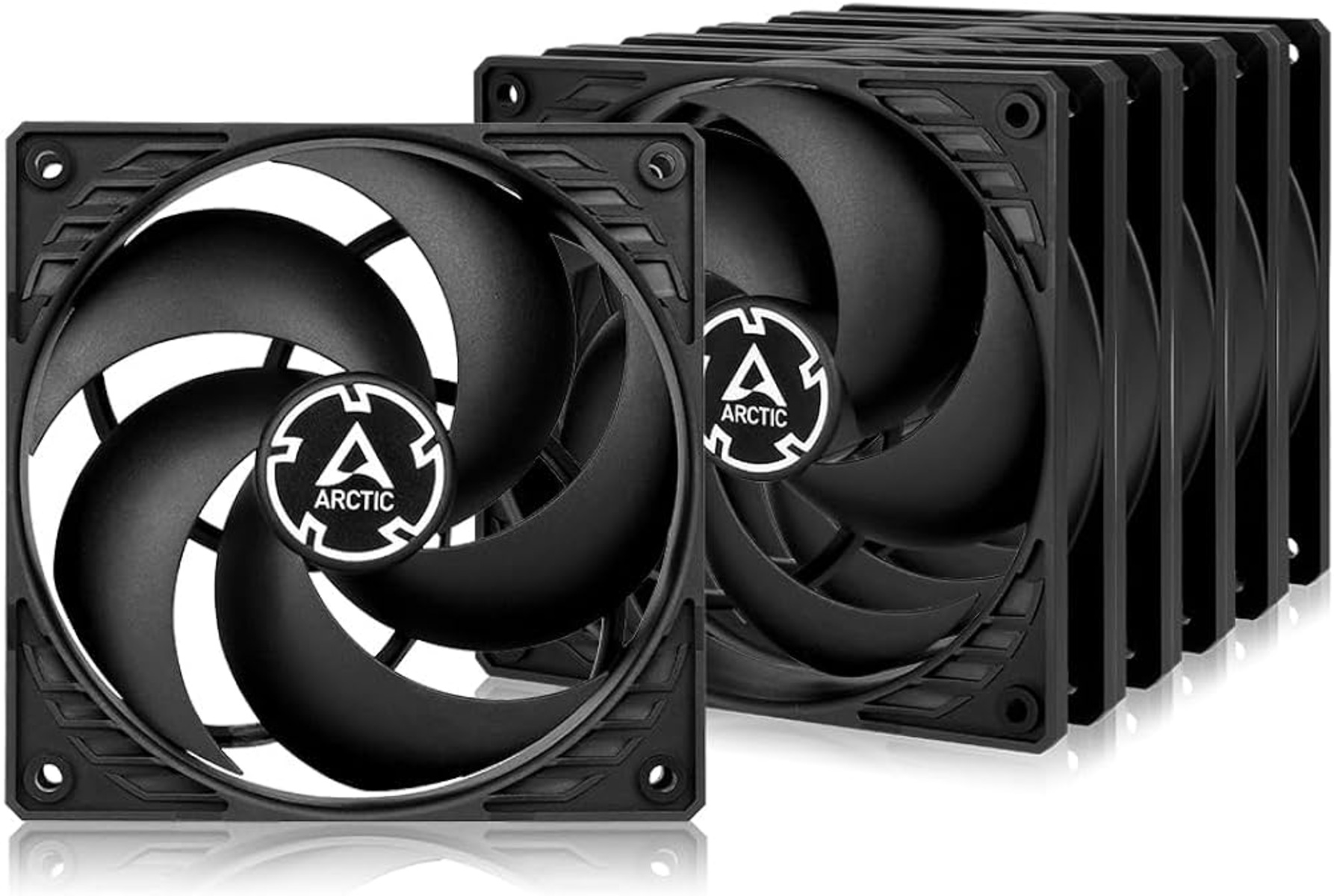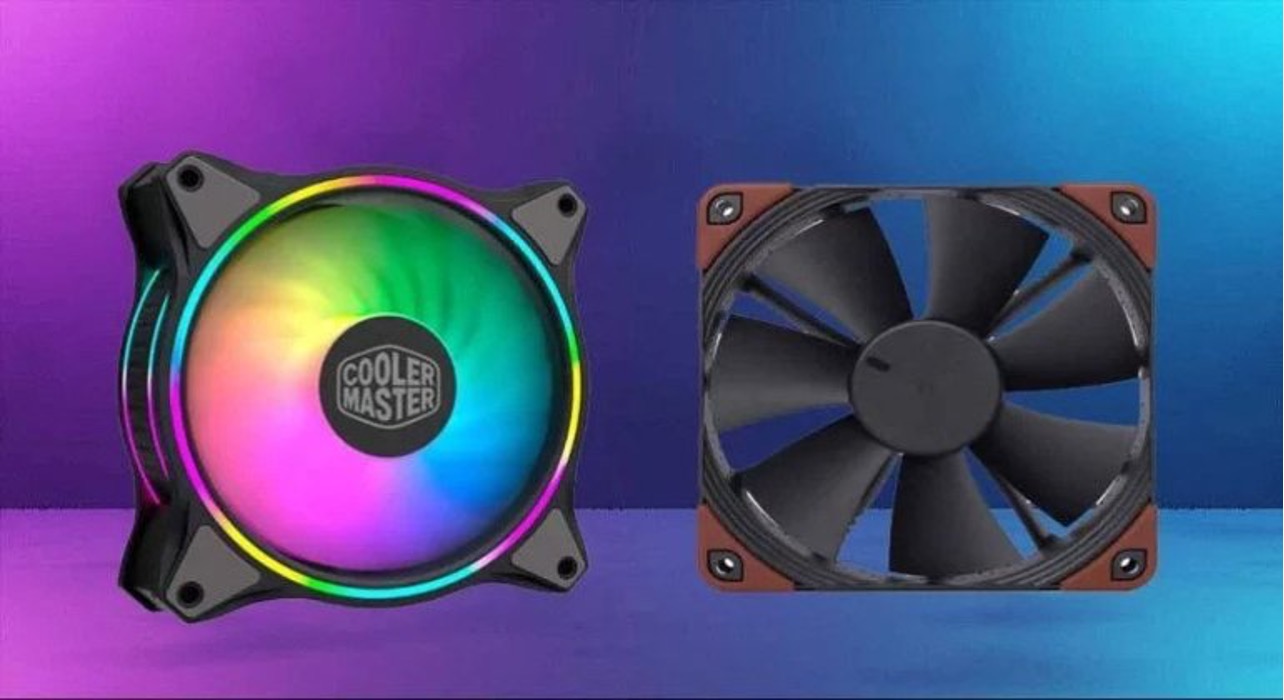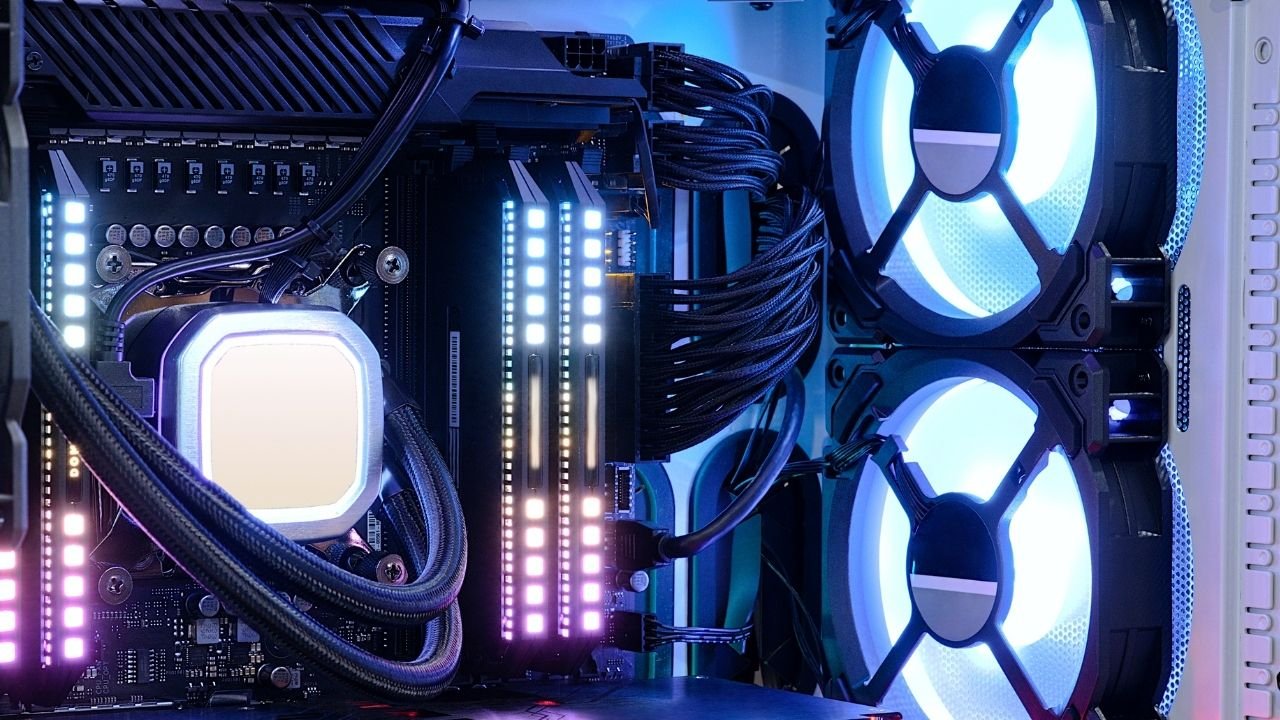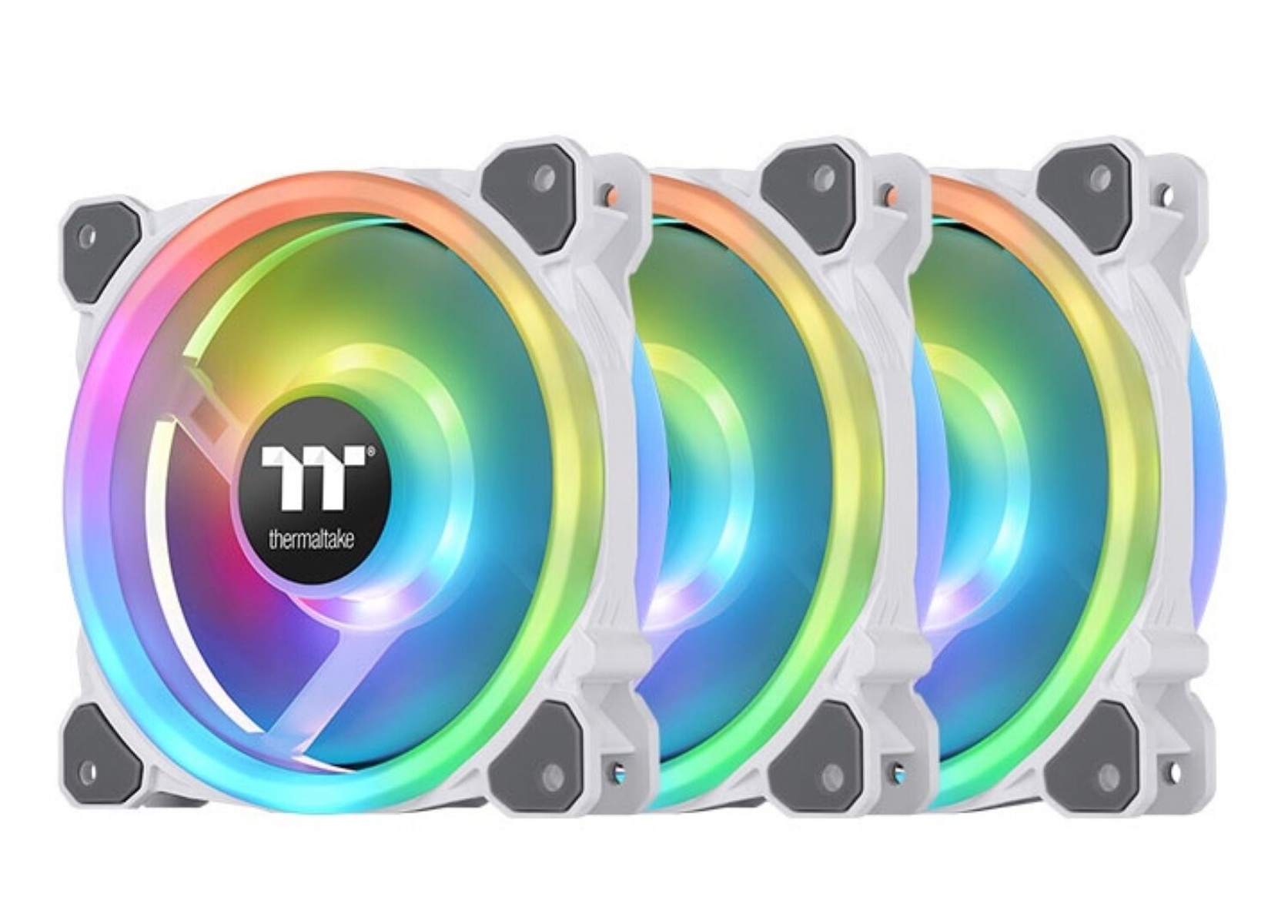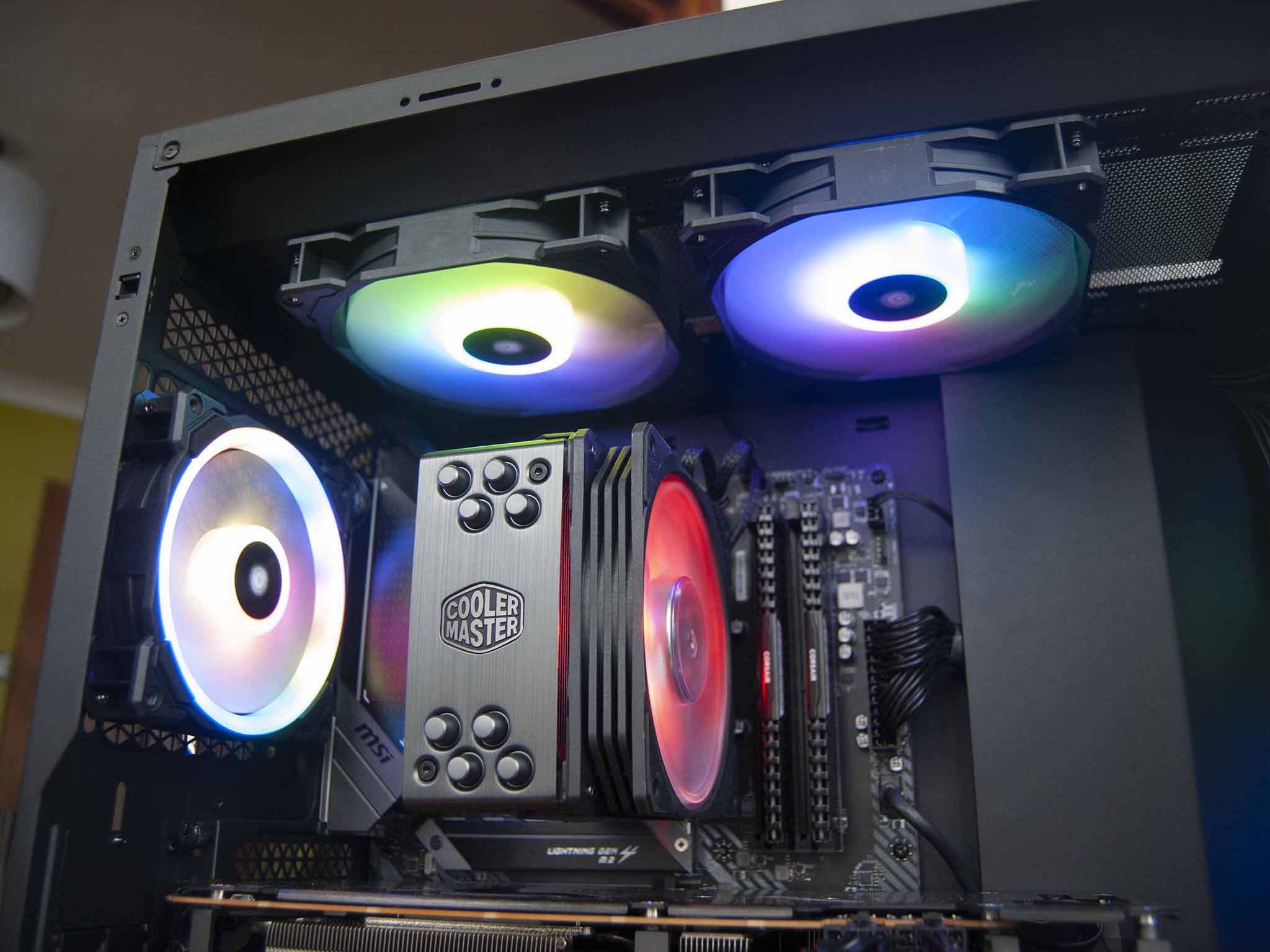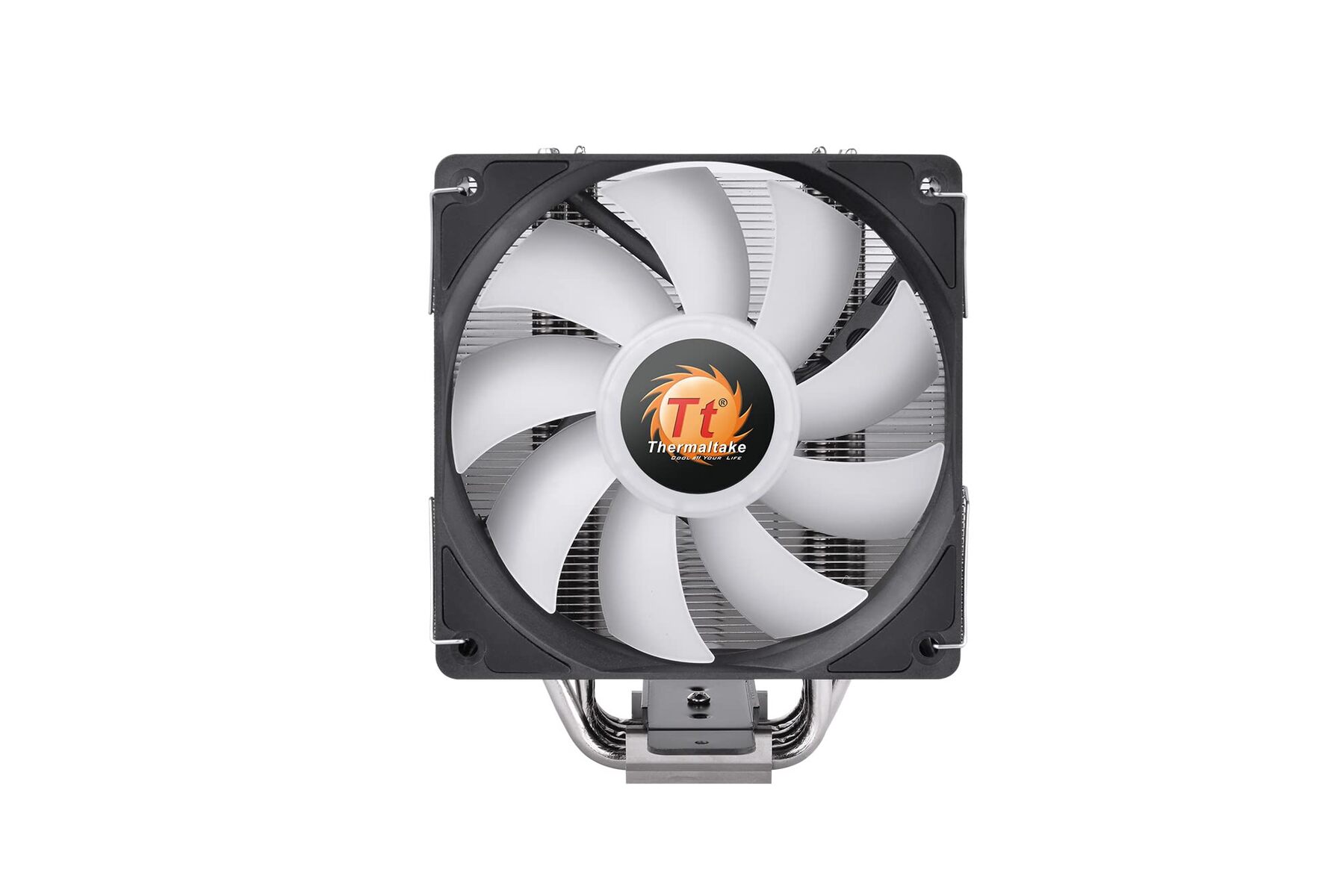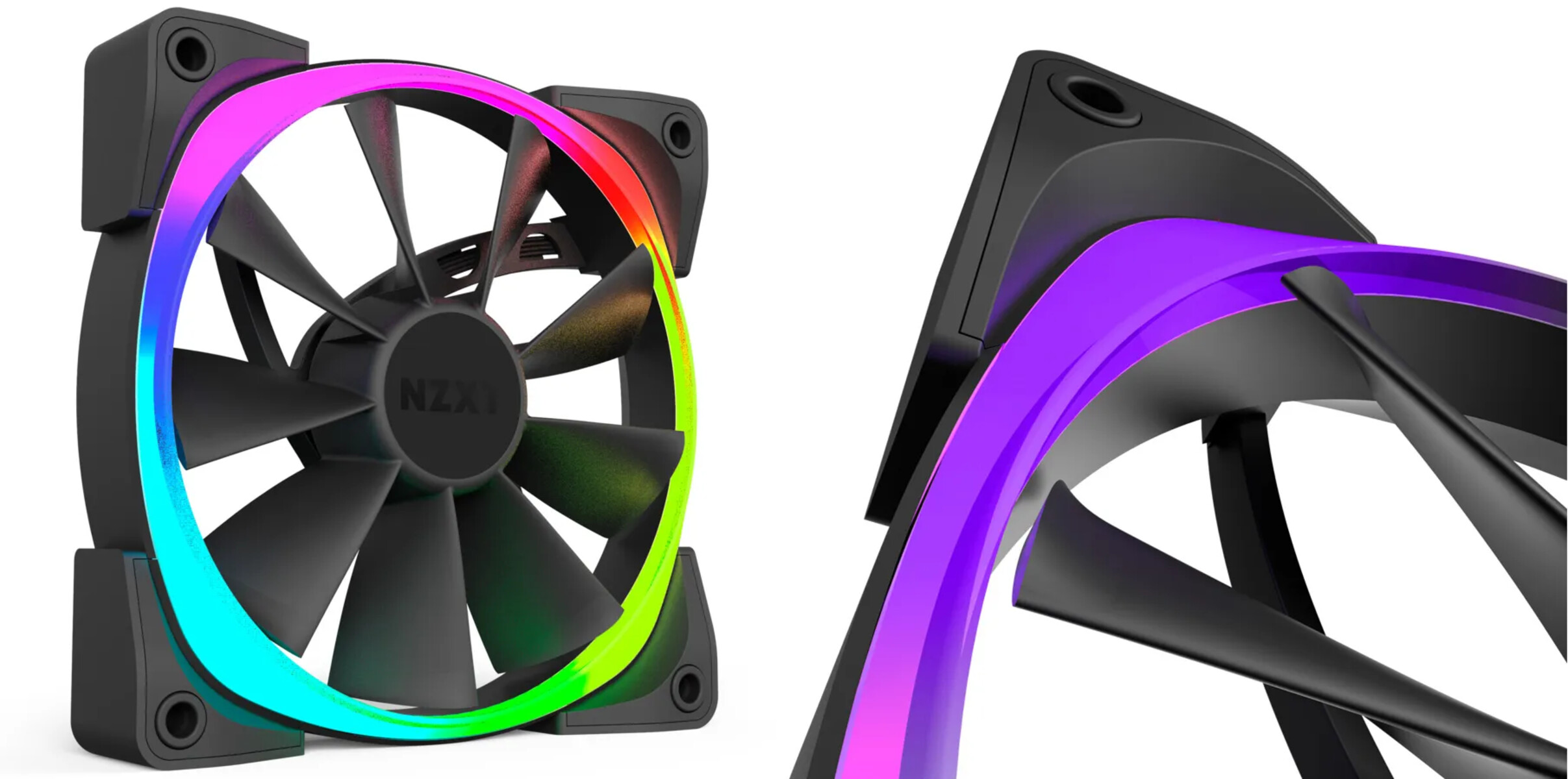Introduction
When it comes to building a PC, there are several factors to consider for optimal performance and efficiency. One of these critical factors is static pressure. Understanding and achieving a good static pressure in your PC case can greatly impact the cooling capabilities and overall stability of your system.
Static pressure refers to the force exerted by air against a surface, such as the case walls or components inside. In the context of a PC case, it is essential to have a balanced and controlled airflow to ensure that hot air is efficiently expelled, and cool air is effectively drawn in. This is particularly important when you have high-performance components that generate a significant amount of heat.
Why is static pressure important, you might ask? Well, when you have multiple fans inside your PC case, they create airflow that helps dissipate heat from the components. However, certain components, such as CPU coolers and graphics cards, have restrictions to the airflow due to their design or placement. This restriction can result in a decrease in airflow and increased temperatures if not managed properly. This is where static pressure comes into play – it helps to overcome resistance and push the air through the restricted areas.
Achieving a good static pressure in your PC case requires careful planning and optimization. In the following sections, we will explore some key strategies to help you achieve this goal. From choosing the right fans to optimizing airflow paths, we’ll cover everything you need to know to create a well-ventilated and efficient PC system.
What is Static Pressure?
Static pressure, in the context of PC cooling, refers to the force exerted by air against a surface, such as the case walls or components inside. It is a crucial factor to consider when it comes to managing the airflow within a PC case. Understanding static pressure is essential for maintaining optimal temperatures and preventing overheating of critical components.
To understand static pressure better, let’s break it down. In PC cooling, there are two types of airflow scenarios – high airflow and restricted airflow. High airflow situations occur when there are few obstructions or restrictions to the path of the air. In contrast, restricted airflow occurs when the air encounters obstacles or tight spaces that impede its flow.
In a PC case, there are various components like CPU coolers, graphics cards, and hard drives that can restrict airflow due to their design or placement. When the air encounters these obstacles, it exerts a force against them. This force is known as static pressure and is measured in millimeters of water column (mmH2O).
Static pressure is crucial because it enables the fans inside the PC case to overcome the resistance caused by these obstructions and maintain a steady airflow. Without proper static pressure, the airflow may be disrupted, resulting in areas of stagnant air and pockets of heat build-up. This can lead to increased temperatures, decreased overall system performance, and potential damage to the components.
Different PC components require different levels of static pressure to ensure optimal cooling. For example, a CPU cooler with a dense fin stack requires higher static pressure to force the air through the narrow spaces between the fins. On the other hand, case fans that are mounted at the front or rear of the case and have unobstructed airflow paths may require lower static pressure.
By understanding the concept of static pressure and its importance in PC cooling, you can make informed decisions when selecting fans, optimizing airflow paths, and managing temperatures within your PC case. The next section will delve into why static pressure is crucial in the context of PC cases and cooling efficiency.
Why is Static Pressure Important in PC Cases?
Static pressure plays a vital role in maintaining efficient and effective cooling within PC cases. A good static pressure ensures that air is properly circulated, allowing for the effective removal of heat and the prevention of component overheating. Let’s explore some key reasons why static pressure is so important in PC cases.
1. Overcoming Airflow Restrictions: PC cases often have various components, such as CPU coolers, graphics cards, and hard drives, that can block or obstruct the airflow. These obstructions create a resistive force that can impede the movement of air. With sufficient static pressure, the fans can push the air through these restricted areas, maintaining a steady flow of cool air and preventing heat buildup.
2. Cooling Performance: High-performance components, such as CPUs and graphics cards, generate a significant amount of heat. Without proper cooling, these components can quickly reach high temperatures, affecting their performance and longevity. By maintaining a good static pressure, you ensure that cool air is effectively directed to these components, helping to dissipate heat and maintain optimal operating temperatures.
3. Balanced Airflow: Proper static pressure ensures a balanced airflow within the PC case. This means that an equal amount of air is directed both into and out of the case, preventing areas of stagnant air or negative pressure zones. Balanced airflow helps to eliminate hotspots and ensures that components throughout the case receive adequate cooling, resulting in overall system stability and longevity.
4. Dust Prevention: Static pressure is not only essential for cooling but also for keeping the inside of the PC case clean and dust-free. When air is forced through small openings or filters, it creates positive pressure that helps prevent dust from entering the case. This reduces the accumulation of dust on components, which can hinder cooling performance and potentially cause damage over time.
In summary, static pressure is a critical factor in PC cooling. It allows for the effective circulation and removal of hot air, ensuring that components stay within an optimal temperature range. By overcoming airflow restrictions, maintaining cooling performance, achieving balanced airflow, and preventing dust buildup, static pressure contributes to the overall stability and longevity of your PC system.
How to Achieve a Good Static Pressure in a PC Case
Achieving a good static pressure in your PC case requires careful planning and optimization. By following these key strategies, you can ensure that air is properly circulated and that your components are kept cool and stable.
- Choosing the Right Fans: Selecting fans with high static pressure ratings is crucial for overcoming airflow restrictions. Fans specifically designed for static pressure, often labeled as “high static pressure” or “static pressure optimized,” are ideal for pushing air through tight spaces and dense fins. Consider factors such as fan size, noise level, and airflow rate when selecting the right fans for your setup.
- Positioning the Fans: Proper fan placement is essential for optimizing static pressure. Fans at the front of the case should draw cool air into the case, while fans at the back or top should expel the hot air. Additionally, strategic placement of fans near components that generate a lot of heat, such as the CPU and graphics card, can help direct cool air towards these components and aid in their cooling.
- Using Fan Filters: While fan filters are primarily used to prevent dust from entering the case, they also play a role in maintaining static pressure. Properly installed filters create positive pressure inside the case, helping to push air through restricted areas and preventing dust buildup. Regular cleaning of fan filters is necessary to ensure optimal airflow and cooling efficiency.
- Managing Cable Clutter: Cable management is often an overlooked aspect when it comes to static pressure optimization. Properly routing and organizing cables can create unobstructed airflow paths within the case, reducing turbulence and ensuring efficient airflow. Use cable ties, Velcro straps, and other cable management solutions to keep cables neat and tidy.
- Optimizing Airflow Path: In addition to fan placement, optimizing the path of airflow within the case can further enhance static pressure. Ensure that there are no obstructions, such as cables or components, blocking the airflow path. Consider using case accessories like shrouds or ducts to guide airflow towards components that require additional cooling.
By implementing these strategies, you can achieve a good static pressure in your PC case, ensuring efficient cooling and preventing component overheating. It is important to regularly monitor temperatures and adjust fan speeds as necessary to maintain optimal performance. Experimenting with different fan configurations and optimizing airflow can help you find the ideal static pressure setup for your specific PC case and component combination.
Choosing the Right Fans
Selecting the right fans for your PC case is a crucial step in achieving a good static pressure. Choosing fans with high static pressure ratings and appropriate characteristics will ensure efficient airflow and overcome any restrictions within the case. Consider the following factors when choosing the right fans for your setup:
Fan Size: The size of the fans plays a significant role in determining their airflow capacity. Common fan sizes for PC cases are 120mm and 140mm. Additionally, larger fans, such as 200mm, can provide increased airflow at lower RPM, resulting in quieter operation.
Static Pressure Rating: Look for fans specifically labeled as “high static pressure” or “static pressure optimized.” These fans are designed to generate greater force and push air through tight spaces and dense cooling fin stacks. Higher static pressure ratings ensure efficient cooling in areas with restricted airflow.
Airflow and Noise Level: Consider both the airflow rate and noise level of the fans. Higher airflow rates, measured in CFM (cubic feet per minute) or m³/h (cubic meters per hour), indicate greater cooling capacity. However, keep in mind that higher airflow rates often result in increased noise. Strike a balance between cooling performance and acceptable noise levels for your specific needs.
Fan Bearing Type: Fans can have different bearing types, such as sleeve, ball, or fluid dynamic bearings. Each bearing type has its pros and cons in terms of noise level, durability, and cost. Consider the longevity and noise factor when selecting the fan bearing type.
Fan Speed Control: Fans with adjustable fan speeds allow you to fine-tune the cooling performance and noise level to match your requirements. Look for fans with PWM (Pulse Width Modulation) or voltage control features, which enable you to adjust fan speeds based on temperature or manually control them through software or hardware.
RGB or Aesthetics: If aesthetics are important to you, consider fans with RGB lighting or other visual features. These fans can add a visually pleasing element to your PC case while ensuring efficient cooling performance.
By taking these factors into account and selecting fans that align with your specific needs and preferences, you can ensure optimal static pressure and effective cooling within your PC case. Remember to consider the overall airflow and fan placement in conjunction with your fan selection for the best results.
Positioning the Fans
Proper fan placement is crucial for achieving a good static pressure and efficient cooling in your PC case. By strategically positioning the fans, you can optimize the airflow and ensure that cool air is directed towards the components that require it the most. Consider the following tips when positioning your fans:
Intake Fans: Place intake fans at the front or bottom of the PC case. These fans draw in cool air from the outside and direct it towards the components. If your case has a front panel with mesh or airflow vents, position the fans behind these openings to maximize air intake. If possible, mount additional intake fans at the bottom of the case to ensure cool air is directed towards the graphics card and power supply.
Exhaust Fans: Position exhaust fans at the rear or top of the PC case. These fans expel hot air from inside the case. Mount exhaust fans at the rear of the case, near the CPU location, to effectively remove heat generated by the processor. Additionally, installing exhaust fans at the top of the case can help remove rising hot air, especially if your case allows for top-mounted fans.
Fan Orientation: Depending on the case configuration, fans can be set up to either pull air into the case or push hot air out of it. In general, mounting fans as intake or exhaust depends on the overall airflow management and component layout in your case. For optimal cooling, create a balanced airflow by ensuring that intake and exhaust fans work together to maintain positive air pressure.
Additional Fan Placement: Consider additional fan placements to target specific areas that may require extra cooling. For example, if you have a graphics card that runs hot, install a fan adjacent to it to help direct cool air towards the GPU. Alternatively, you can also use fan brackets or accessories to position fans at specific angles or locations to enhance cooling in critical areas.
Fan Configuration: Experiment with different fan configurations to find the setup that works best for your case and components. For example, a common configuration is a front-to-back airflow, where intake fans are placed at the front and exhaust fans are placed at the rear. However, certain cases may benefit from alternative configurations, such as bottom-to-top or side-to-side airflow. Monitor temperatures and adjust fan speeds accordingly to optimize cooling and static pressure.
By considering the intake and exhaust positions, fan orientation, additional fan placements, and overall fan configuration, you can optimize the airflow and achieve a good static pressure in your PC case. Remember to regularly clean the fans and ensure that they are free from dust and debris for optimal performance.
Using Fan Filters
Using fan filters in your PC case not only helps keep the components clean but also plays a crucial role in maintaining a good static pressure. Fan filters prevent dust and debris from entering the case, ensuring efficient airflow and reducing the risk of overheating. Here’s why and how you should use fan filters in your PC case:
Dust Prevention: Dust accumulation is a common issue in PC cases, and it can negatively impact cooling performance and system stability. Fan filters act as a barrier, preventing dust particles from entering the case and settling on components such as fans, heatsinks, and delicate circuitry. By reducing the amount of dust that enters the case, you can maintain optimal airflow and prevent overheating.
Positive Air Pressure: When properly installed, fan filters create positive air pressure inside the case. Positive air pressure means that the amount of air being pushed into the case by the intake fans is greater than the amount of air being expelled by the exhaust fans. This positive pressure helps to expel air through any gaps or openings, thus minimizing the potential for dust to enter and settle on components.
Easy Maintenance: Fan filters are designed to be easily removable and washable, making maintenance a breeze. Regular maintenance of fan filters ensures that they continue to effectively filter out dust particles. Depending on the amount of dust in your environment, it is recommended to clean the filters every few weeks or at least once a month to prevent significant dust buildup.
Placement and Compatibility: Place the fan filters on the intake fans where they can effectively filter incoming air. Generally, you should have filters on the front panel and any other intake areas such as the bottom or side panels. Ensure that the fan filters you choose are compatible with the size and mounting holes of your intake fans.
Considerations for Airflow: While fan filters are beneficial for static pressure and dust prevention, they can also slightly restrict airflow. To minimize this restriction, choose fan filters that are designed to have minimal impact on airflow. Look for fan filters with a fine mesh that still allows for good airflow while effectively capturing dust particles.
By using fan filters in your PC case, you not only protect your components from dust but also maintain a good static pressure for optimal cooling. Regularly cleaning and maintaining the filters will ensure that your system runs efficiently and stays dust-free, contributing to better performance and longevity of your PC components.
Managing Cable Clutter
Proper cable management is not only essential for aesthetics but also plays a significant role in achieving a good static pressure in your PC case. Effective cable management helps optimize airflow, reduces turbulence, and ensures that cool air can flow freely through the case. Consider the following tips for managing cable clutter in your PC case:
Plan Ahead: Before you start building your PC, take the time to plan out the cable routing. Consider the locations of your components, the length of your cables, and the positions of your cable management points within the case. Planning ahead allows for a cleaner and more organized cable layout.
Use Cable Ties and Velcro Straps: Cable ties and Velcro straps are simple yet effective tools for keeping cables tidy and preventing them from obstructing airflow. Bundle together cables that run parallel to each other and secure them with cable ties or Velcro straps at regular intervals. This will prevent cables from tangling and obstructing the airflow path.
Hide Cables Behind Components: Whenever possible, route and hide cables behind components such as the motherboard, power supply shroud, or cable management panel. This not only keeps the cables out of sight but also creates a clearer airflow path from the intake fans to the components that require cooling.
Utilize Cable Routing Holes and Grommets: To further enhance cable management, take advantage of the cable routing holes and grommets provided in your PC case. These are designed to allow cables to pass through from one chamber to another, keeping them organized and out of sight. Use these holes and grommets strategically to route cables to their destination while minimizing clutter.
Consider Modular Power Supplies: Modular power supplies have detachable cables, allowing you to connect only the cables you need. This helps reduce cable clutter inside the case. Additionally, using custom-length cables or cable extensions can further streamline cable management and create a clean and organized look.
Regular Maintenance: It is important to periodically check and reorganize cables to ensure they remain properly managed. Over time, cables may become loose or tangled, obstructing airflow. Taking the time to reposition and secure cables as needed will help maintain an efficient static pressure and proper airflow within the case.
By actively managing cable clutter and implementing a systematic cable management approach, you can optimize airflow and achieve a good static pressure in your PC case. Not only will this result in a cleaner and more organized appearance, but it will also contribute to better cooling performance and stability of your components.
Optimizing Airflow Path
Optimizing the airflow path within your PC case is crucial for achieving a good static pressure and efficient cooling. By ensuring that air flows smoothly and unobstructed through the case, you can maximize the cooling potential and prevent hotspots. Consider the following tips to optimize the airflow path in your PC case:
Remove Obstructions: Identify any obstructions that may hinder the airflow and carefully remove them. This includes any unnecessary brackets, drive cages, or excess cables that may obstruct the path of the airflow. By eliminating these obstructions, you create a clear and unobstructed pathway for the air to flow through.
Direct Air Towards Components: Direct the airflow towards components that require optimal cooling. Place intake fans strategically to draw cool air towards areas such as the CPU, GPU, and hard drives. Additionally, consider using shrouds or air ducts to guide the airflow towards specific components, maximizing cooling efficiency.
Balance Intake and Exhaust: Maintain a balanced ratio between the number of intake fans and exhaust fans in your PC case. This helps prevent negative pressure, where more air is exhausted than intake, which can lead to increased dust accumulation and reduced cooling efficiency. Aim to have an equal number or slightly more intake fans than exhaust fans to maintain positive air pressure.
Utilize Fan Filters: While fan filters are primarily used to prevent dust from entering the case, they also contribute to optimizing the airflow path. Properly installed fan filters create positive pressure inside the case, helping to push air through restricted areas and preventing dust buildup. Keep the filters clean and free from dust to maintain optimal airflow.
Consider Fan Placement and Orientation: Proper fan placement and orientation can significantly impact the airflow path. Position intake fans at the front or bottom of the case to draw cool air in, while exhaust fans should be placed at the rear or top of the case to expel hot air. Additionally, align the fan blades to direct the airflow towards the components that require cooling.
Monitor and Adjust Fan Speeds: Regularly monitor the temperatures of your components and adjust fan speeds accordingly. Most modern PC cases and motherboard BIOS have options to control fan speeds automatically based on temperature. Adjusting the fan speeds ensures that the airflow is optimized for cooling as needed while maintaining acceptable noise levels.
By optimizing the airflow path within your PC case, you can achieve a good static pressure and ensure effective cooling for your components. It is important to regularly monitor temperatures and make adjustments as necessary to maintain optimal airflow and cooling performance.
Conclusion
Achieving a good static pressure in your PC case is essential for maintaining efficient cooling and optimal performance. By understanding the concept of static pressure and implementing the strategies discussed, you can create an environment that promotes proper airflow, prevents overheating, and prolongs the lifespan of your components.
Choosing the right fans with high static pressure ratings, positioning them strategically, and using fan filters all contribute to maintaining a good static pressure. Managing cable clutter and optimizing the airflow path within the case further enhance cooling efficiency. Regular maintenance and monitoring of temperatures ensure that your PC runs smoothly and remains dust-free.
Remember that every PC setup is unique, and you may need to experiment with different configurations and fan placements to find what works best for your specific case and components. Pay attention to the temperatures of your components and adjust fan speeds as necessary to maintain optimal cooling.
By achieving a good static pressure, you can keep your PC running cool, improve performance, and minimize the risk of component overheating. So, take the time to carefully plan and optimize your PC case for effective airflow, and enjoy a stable and efficient system for all your computing needs.







